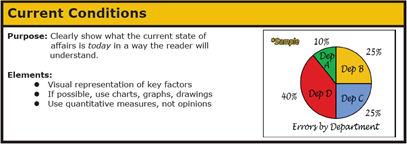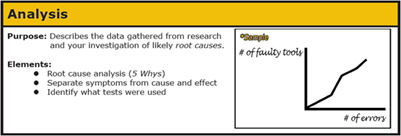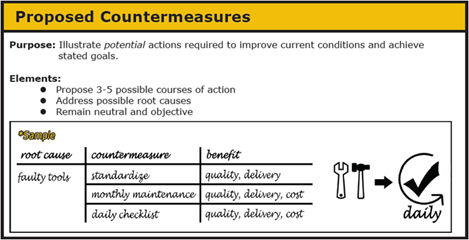
advertisement
Hotel Problems Solved Once and For All
(Part 2 of 3)
Why? Why? Why? Why? Why? - The Route to Root Cause
|
News for the Hospitality Executive |

advertisement
Why? Why? Why? Why? Why? - The Route to Root Cause
| by Jim Hartigan July 15, 2011 Orgwide's “O3” Problem Solving Process is a comprehensive seven-step approach to equipping hotel managers with the leadership, process improvement skills and mentorship capabilities necessary to achieve their hotel’s objectives. At the heart of our O3 approach is a one-page visual (drawing, charts, graphs, words, etc.) depicting the seven-step problem-solving process. During the problem-solving process, hotel managers (mentors) guide their high potential team members (protégés) in the discovery learning process, so the protégés will be able to produce an accurate, thorough O3 report while simultaneously learning how use critical thinking to make better business decisions. Throughout the process, key business problems are explored, investigated, and ultimately solved. In part one of our series we discussed the first three steps in the seven step O3 Problem Solving process.
   Today, we stand on the shoulders of giants such as Drs. Walter Shewhart and W. Edward Deming as we explore the fourth and fifth steps in the O3 Problem Solving Process – Analysis and Proposed Countermeasures (commonly, and erroneously, thought of as Solutions). Analysis  The purpose of the Analysis step is to
discover the “root cause” of your problem.
Just using the term “root cause” sends shivers down the spine of many
managers. They think of fish bone
diagrams and other such complex activities. The purpose of the Analysis step is to
discover the “root cause” of your problem.
Just using the term “root cause” sends shivers down the spine of many
managers. They think of fish bone
diagrams and other such complex activities. In truth, this step is important and need not be complicated. The O3 Problem Solving Process uses a simple, yet incredibly effective means of determining a problem’s root cause. First, clarify the problem. What is the “real problem” in measurable terms of performance? Next, go to the Gemba. The what? That’s right, the Gemba. It is a Japanese term meaning "the real place." Japanese detectives call the crime scene “gemba,” and Japanese TV reporters may refer to themselves as reporting from “gemba.” In a hotel, gemba refers to the place where value is created; the gemba is the front desk, or the lobby, or the restaurant. It’s wherever the service provider interacts directly with the customer – either directly or indirectly. By going to where the problem lives, you can gather your facts first hand and thoroughly and objectively analyze the situation. Once you’re at the gemba, it’s time to ask some questions. As John Shook, former manager at Toyota’s Japanese headquarters, said in his webinar “Managing to Learn”, “it’s more important to give people the right questions than the right answers.” What Shook was referring to in that instance is the importance of getting your team to think and to take initiative. So, what’s the most important question you can ask to do that: Why? What’s the second most important question: Why? In fact, the O3 Problem Solving Process advocates the “5 Why’s” process. The “5 Why’s” process is the practice of asking “why” repeatedly (or at least five times) to go beyond the obvious symptoms of the problem to discover the root cause. The first “Why” usually yields the direct cause of the problem. Asking “why” four more times is a “peeling back of the onion” so to speak that helps you dig to the root cause. An example of the “5 Why’s” in action might look like this when confronted with a machine that stopped working:
Proposed Countermeasures  During this
step you will develop, evaluate and, eventually, select the best
options for
addressing the gap between the current and target conditions. By
preparing several options from which to
choose, the problem solving team can weigh factors of each option such
as cost,
timing, and ultimately effectiveness. O3
uses the term “countermeasure” rather than “solution” because the word
“countermeasure”
recognizes that apparent solutions inevitably create new
problems. Once a countermeasure is in place, it may
create a new situation with its own set of circumstances that need to
be
addressed. Based upon an evaluation of
the various options – costs, quality, delivery, speed, etc. each
countermeasure
can be objectively reviewed by the team.
Key to success is to gain consensus or agreement on the chosen
countermeasure. This is key for two
reasons: 1) it helps to recognize who actually “owns” the
countermeasure, and 2)
it helps the “owner” gain the often critical support of others for its
ultimate
success. During this
step you will develop, evaluate and, eventually, select the best
options for
addressing the gap between the current and target conditions. By
preparing several options from which to
choose, the problem solving team can weigh factors of each option such
as cost,
timing, and ultimately effectiveness. O3
uses the term “countermeasure” rather than “solution” because the word
“countermeasure”
recognizes that apparent solutions inevitably create new
problems. Once a countermeasure is in place, it may
create a new situation with its own set of circumstances that need to
be
addressed. Based upon an evaluation of
the various options – costs, quality, delivery, speed, etc. each
countermeasure
can be objectively reviewed by the team.
Key to success is to gain consensus or agreement on the chosen
countermeasure. This is key for two
reasons: 1) it helps to recognize who actually “owns” the
countermeasure, and 2)
it helps the “owner” gain the often critical support of others for its
ultimate
success.Through the first five steps, we’ve identified our problem, shown the current state of affairs (and compared it to other problem-free areas), and articulated the target for our eventual actions. Additionally, we finished our Analysis and developed a selection of Countermeasures for consideration. In the final segment to our series, we’ll bring it all home with a look at steps six and seven – your Plan and Follow-up. You won’t want to miss it! Until then, remember take care of the customer, take care of each other, and take care of yourself.  About the Author: Jim Hartigan, Chief Business Development Officer and Partner joined OrgWide Services, a Training/e-Learning, Communications, Surveys and Consulting firm in April 2010 after nearly 30 years experience in the hospitality industry, including the last 18 as a senior executive with Hilton Worldwide. Jim’s last position was that of Senior Vice President – Global Brand Services where he provided strategic leadership and business development and support to the $22B enterprise of 10 brands and more than 3,400 hotels in 80 countries around the world. His team was responsible for ensuring excellence in system product quality, customer satisfaction, market research, brand management, media planning, and sustainability. |
| Contact: Jim Hartigan Chief Business Development Officer & Partner OrgWide Services 165 N. Main Street, Suite 202 Collierville, TN 38017 office: 901.850.8190 Ext. 230 mobile: 901.628.6586 [email protected] www.orgwide.com |